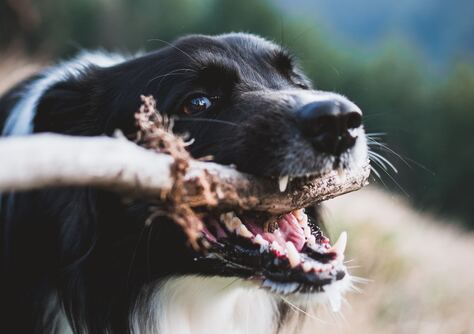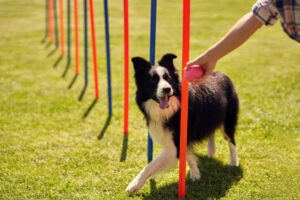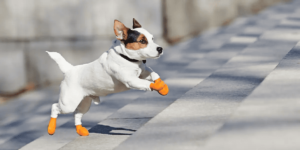Like people, dogs can also get dental conditions that can cause suffering, discomfort, and other major health issues if left untreated.
Luckily, you can help guarantee your dog’s teeth and gums keep healthy throughout their lifetimes by following a regular dental care routine as well as implementing a few easy lifestyle changes.
In this post, we’ll look at several efficient methods for keeping your dog’s teeth and gums healthy!
How to Keep Your Dog’s Teeth and Gums Healthy
Here are some easy tips you can start following today!
Clean Your Dog’s Teeth Regularly
Regular cleaning is one of the most important components of preserving your dog’s dental health. Brushing should be introduced gradually to acquaint your pet with the procedure.
Begin by brushing with a soft-bristled toothbrush or a dog-specific finger brush. To make it more enticing to your dog, look for toothpaste with scents like poultry or beef.
Clean your dog’s teeth a minimum of twice a week, if not on a regular basis.
Focus on the outside surfaces, using gentle, circular movements, and reinforce excellent behavior with compliments and rewards.
Provide Appropriate Chewing Toys
Chewing is a natural action for dogs that can aid in cleaning their teeth.
Make sure that your pet has a supply of suitable chewing things, such as dental bites, specifically made dog toys, and raw bones.
These alternatives can help eliminate plaque and tartar accumulation, train your dog’s jaw muscles, and fulfill his natural desire to chew.
Instead, why not try antlers? Unlike rawhide bones that have many downsides, antlers are safe. The significant advantage of antlers is that they not only keep your dog entertained but also aid in keeping teeth clean by functioning as a natural dental chew.
Regular Veterinary Check-ups
Schedule periodic dental check-ups with your veterinarian to track your dog’s oral health.
Expert dental cleanings by a vet are required to remove persistent plaque and tartar accumulation that brushing alone may not clear.
Your veterinarian can also look for symptoms of infection, gum disease, or other oral hygiene concerns in your dog’s teeth and gums.
Regular check-ups enable early diagnosis and treatment of any dental issues, assuring your dog’s long-term oral health.
Since various breeds have varied jaw alignments and how the teeth contact, it is vital to consult with your veterinarian before administering anything to your dog’s teeth.
Flat-faced dogs possess poorly positioned jaws and crowded or missing teeth, thus more prone to dental illness.
Use Water Additives and Oral Rinses
Water additives and oral rinses are both beneficial additions to maintaining your dog’s dental hygiene. These things are intended to remove plaque and refresh your dog’s breath.
However, selecting dog-specific items and checking with the vet before adding them to your pet’s regimen is critical.
Some rinses may not be appropriate for certain dogs with specific medical issues. In this case, we recommend asking your vet.
Conclusion
Dental hygiene is critical for your dog’s general health and well-being. You can greatly enhance your dog’s oral hygiene by using the four methods listed above.
Keep in mind that prevention is better than cure. It’s better to begin early and include dental care in your dog’s daily routine. Your pet will repay you with a joyful, healthy smile for many years!
For more dog tips and tricks, don’t forget to check out the PetFitness blog!








